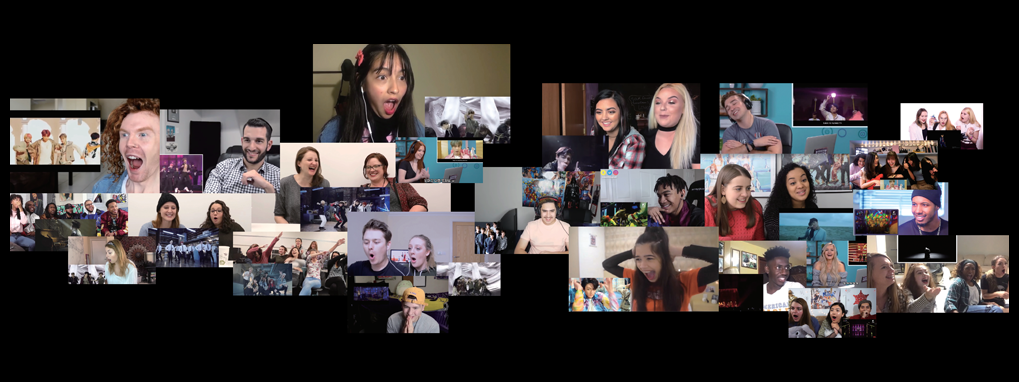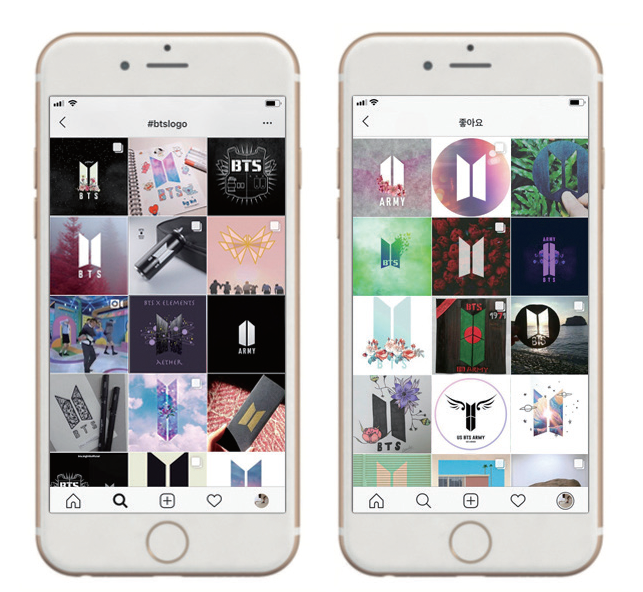The BTS phenomenon involves remarkable social and cultural changes inspired by the boy band and their fandom, ARMY. At the root of this phenomenon, which is political as well as aesthetic, lies the rapidly changing media environment, which is actively used for the creation, dissemination and reproduction of art.

Global fans watch BTS videos on various online media and make their own reaction videos to share them on social media. BTS videos are actively reproduced and circulated by fans through digital networks.
BTS is a group of musicians, so it is impossible to discuss what is currently transpiring without scrutinizing their music, performance and messages. Yet, to say that they are talented and attractive performers producing great music is not a sufficient explanation of the significance of the BTS phenomenon. Any attempt to understand it must address these questions: On what platforms do the artists and their fans around the world meet and build their powerful bond? What is implied by the role of those platforms? Are they evolving in a way that responds to the change desired by the public?
Notably, the common feature shared by all critical elements of this unheard-of phenomenon is “horizontality.” Therefore, an exploration of the phenomenon should be based on the inherent horizontality of digital networking technologies; the conservation of this horizontality in BTS content by breaking away from a hierarchy imposed by capital and authority; the message advocating a more horizontal world and the public’s aspirations for horizontality manifested in class, race, language, gender, culture and religion; and the horizontal encounters between BTS and their fans sharing such aspirations.
In the course of this exploration, the general public, variously referred to as receivers of art, consumers, fandom or audience, may suggest more clearly the direction of change, because the essence of the BTS phenomenon has a lot to do with the political unconscious, or the zeitgeist, behind the explosive enthusiasm of the global fandom.
Audience on the Move
BTS’ music videos, “online installation videos,” concert clips and other types of content are used by viewers in a media environment consisting of a wide variety of screens and networks. The term “online installation videos” covers an array of videos released by the band and circulated under diverse names like short films, highlight reels and trailers. It refers to videos that cannot be placed under any existing category such as music video or film. These videos are released at intervals like video art works exhibited in a gallery that exists in online spaces only, and the interval between works is not spatial but temporal. Their symbolic images and narratives, each referring to other works, build up a chain of meaning. Similar to experimental films, short films or video art, these clips are a notable feature of BTS videos.
In other words, BTS is producing a large volume of audiovisual content made available by the technologies of our era. The music videos, online installations and other works in the “BTS Universe,” a fictional online world starring the seven members, effectively use symbolic images which can be interpreted diversely in a unique structure where they constantly reference one another. These videos are produced on the assumption that viewers will freely access and use them in their digital networks. Consuming an array of audiovisual content in a multi-platform environment, viewers can watch the videos on the go using mobile devices, which enable repetitive viewing, or even use editing functions such as enlarging and color compensation. In this sense, the viewers can be called an “audience on the move.”
Taking advantage of such a diversity of platforms, the viewersremixes or clips by connecting or cutting the original videos. They can produce a wider variety of content by adding their own reactions or interpretations, and the materials d in this way are shared alongside BTS’s original works. This is not limited to a small group of zealous fans, but rather is a common mode of appreciation among the majority of BTS fans. This changed behavior in the reception of art, so common that it may seem insignificant, is bringing profound change in art form.
According to the philosopher Walter Benjamin, a change in the way art is received by the general public is the principal cause of a change in art form. In “The Work of Art in the Age of Mechanical Reproduction,” he stated, “The mass is a matrix from which all traditional behavior toward works of art issues today in a new form. Quantity has been transmuted into quality. The greatly increased mass of participants has produced a change in the mode of participation.” In sum, as productivity is improved by a certain technology, the mode of artistic production itself changes. Technological development alters the public reception of art, which in turn leads to a qualitative change in the art form itself.
The BTS phenomenon poses important questions about
the value sought in media-based art in relation to the changing
world and the way the future is heading, as well as the direction
in which the media environment is moving with great force.

Typing the hashtag “#BTSlogo” on Instagram yields thousands of variations of BTS and ARMY logos made by global fans, demonstrating the reciprocal relations between the musicians and their fans.
Switch of Roles
Online network platforms are the technological vehicle facilitating audience participation in creation. Through streaming and sharing, the audience endows videos released online with certain functions and a mode of existence. Unlike films presented in theaters or viewed on DVDs, these short clips exist only as data before they are imbued with life by viewers as they click and share. This change in the structure of audience participation brought about by technological advancements is actively realized by BTS videos. The viewers’ creations exist alongside BTS’s original videos on the same platforms, and their interactions and interrelations give rise to a variety of meanings.
The scope of art is no longer limited to the creations of professional artists, as the videos made by viewers, which expand and reproduce the meanings of the original works, are also embraced within the fluid boundary. A work’s significance and use are constantly redefined and red in the networks of changing images, and these rearrangements constitute a process of convergence, in which different devices are integrated into the user-audience behavior. In “Convergence Culture: Where Old and New Media Collide,” Henry Jenkins says, “I will argue against the idea that convergence should be understood primarily as a technological process bringing together multiple media functions within the same devices. Instead, convergence represents a cultural shift as consumers are encouraged to seek out new information and make connections among dispersed media content.”
In this mode of production, art radically breaks down the boundary between artist and audience, between art creator and art consumer. The transcendental status, authority and roles traditionally invested in the artist are no longer valid. Making connections with an artwork through online networks, the audience participates in the creation of art and generates new meanings within the networks as users of equal status. In the end, a radical change is impending in the concept and nature of art itself.

A month-long campaign conducted by BTS and Hyundai Motor Company, ARMYPEDIA began on February 25, 2019. ARMYs logged on to the campaign website and posted writings, photos and videos on BTS. A teaser of ARMYPEDIA is released on a billboard in London’s Piccadilly Circus.Hyundai Motor Company
Sharing Value
The major features of video art in the new networks include the fluid scope of artworks; the open territory of art alongside the networks of related content; the breakdown of the traditional boundary between the artist and the audience; and the actual mobility of the audience owing to mobile network technologies. In my book, “BTS, Art Revolution,” I used the term “network-image” to explain this production mode of video art.
These characteristics are generated by audience actions performed daily on shared platforms or social networks. Considering the social influence of these mobile network services as well as the sweeping number of viewers who use these services daily, what the 21st-century mobile network society seeks in the “network-image” must be “sharing value.”
Just as Walter Benjamin pointed out, mechanical reproduction transformed the value of artistic production from cult value to exhibition value. Similarly, the extensive use of mobile networking technologies means that the value of 21st-century art is changing from exhibition value to sharing value. The advent of the “network-image” as a new art form means far more than just a change in the mode of art. Fundamentally, it represents an immense historic change. That is, it is a symptomatic indication of the way in which the world is changing.
The BTS phenomenon is not just about a somewhat extraordinary way of appreciating a popular boy band’s music videos. Ultimately, it poses important questions about the value sought in media-based art in relation to the changing world and the way the future is heading, as well as the direction in which the media environment is moving with great force.